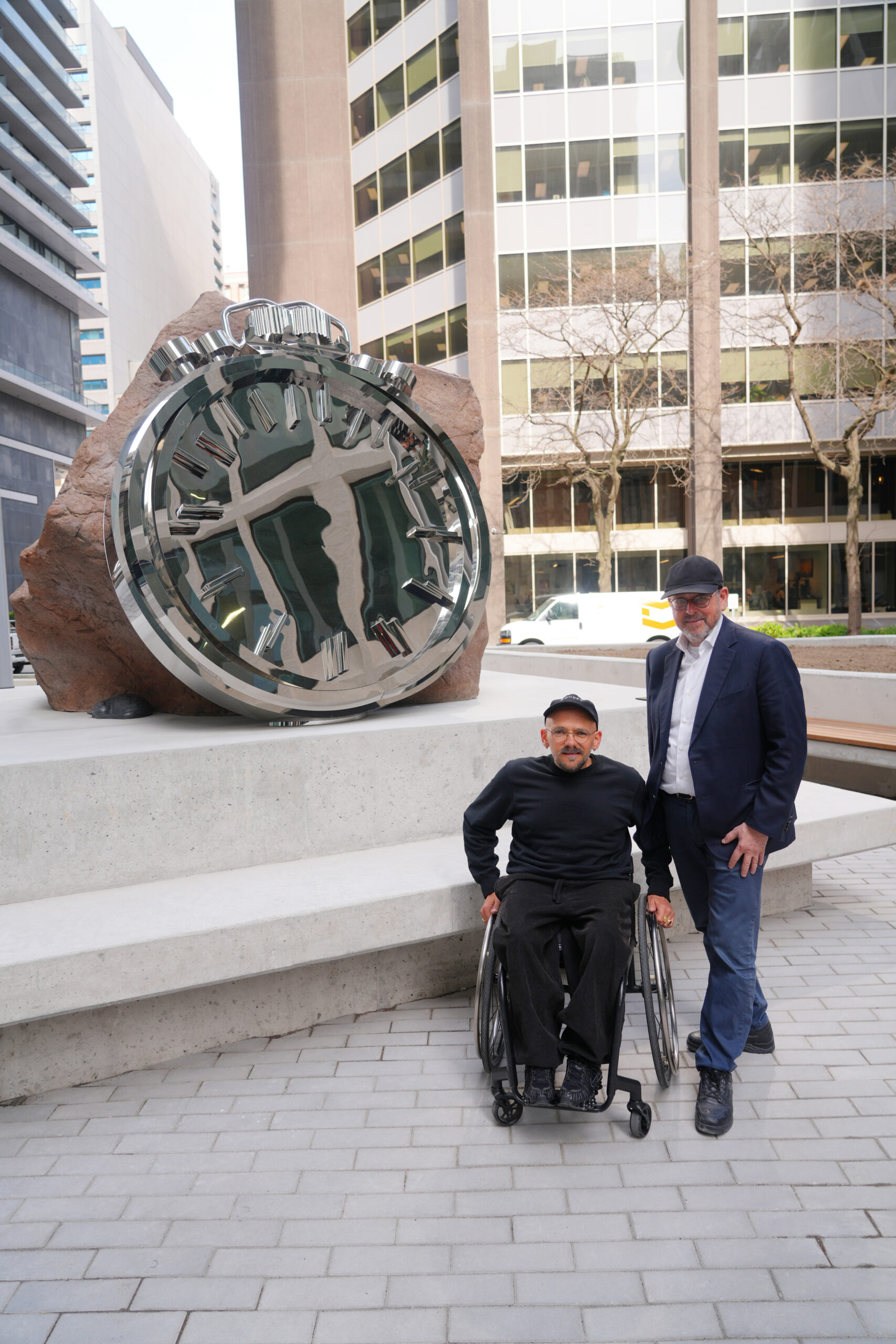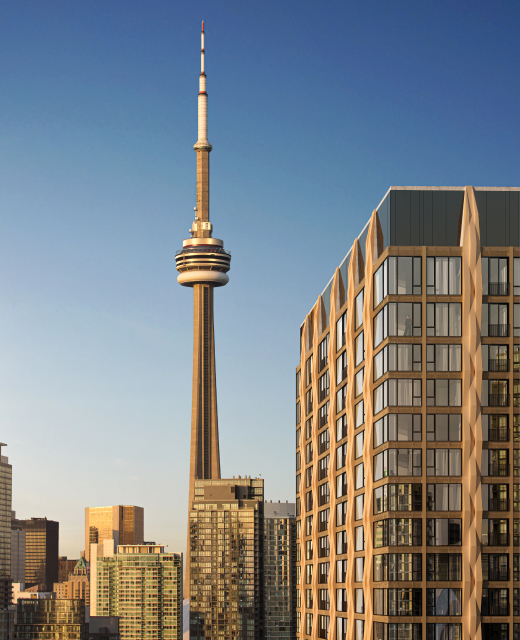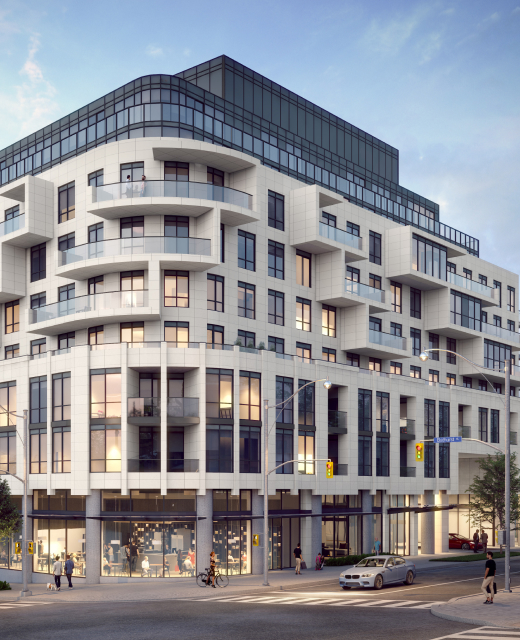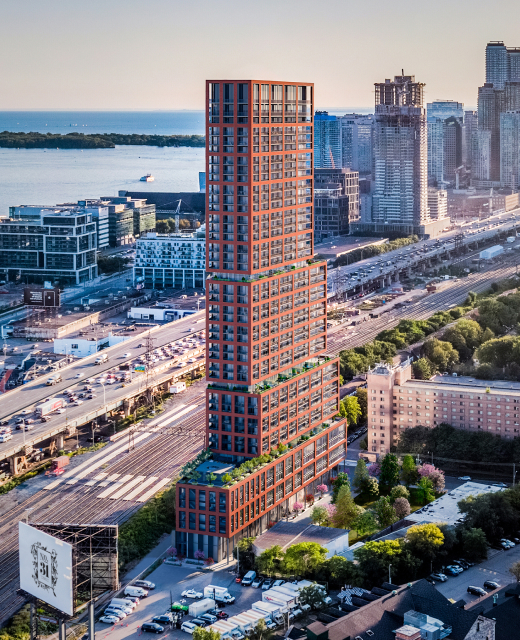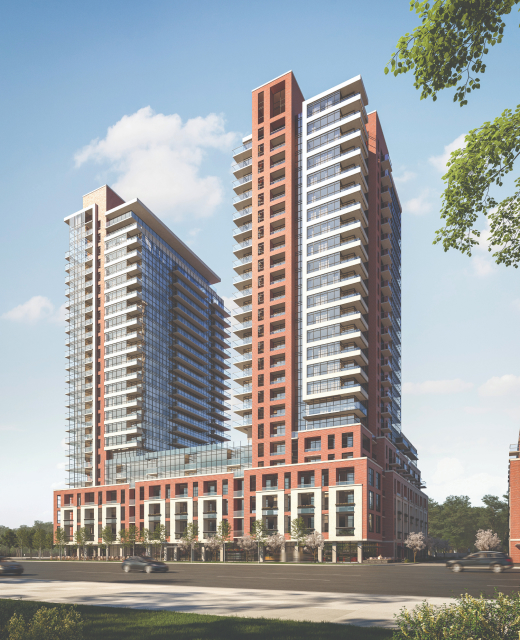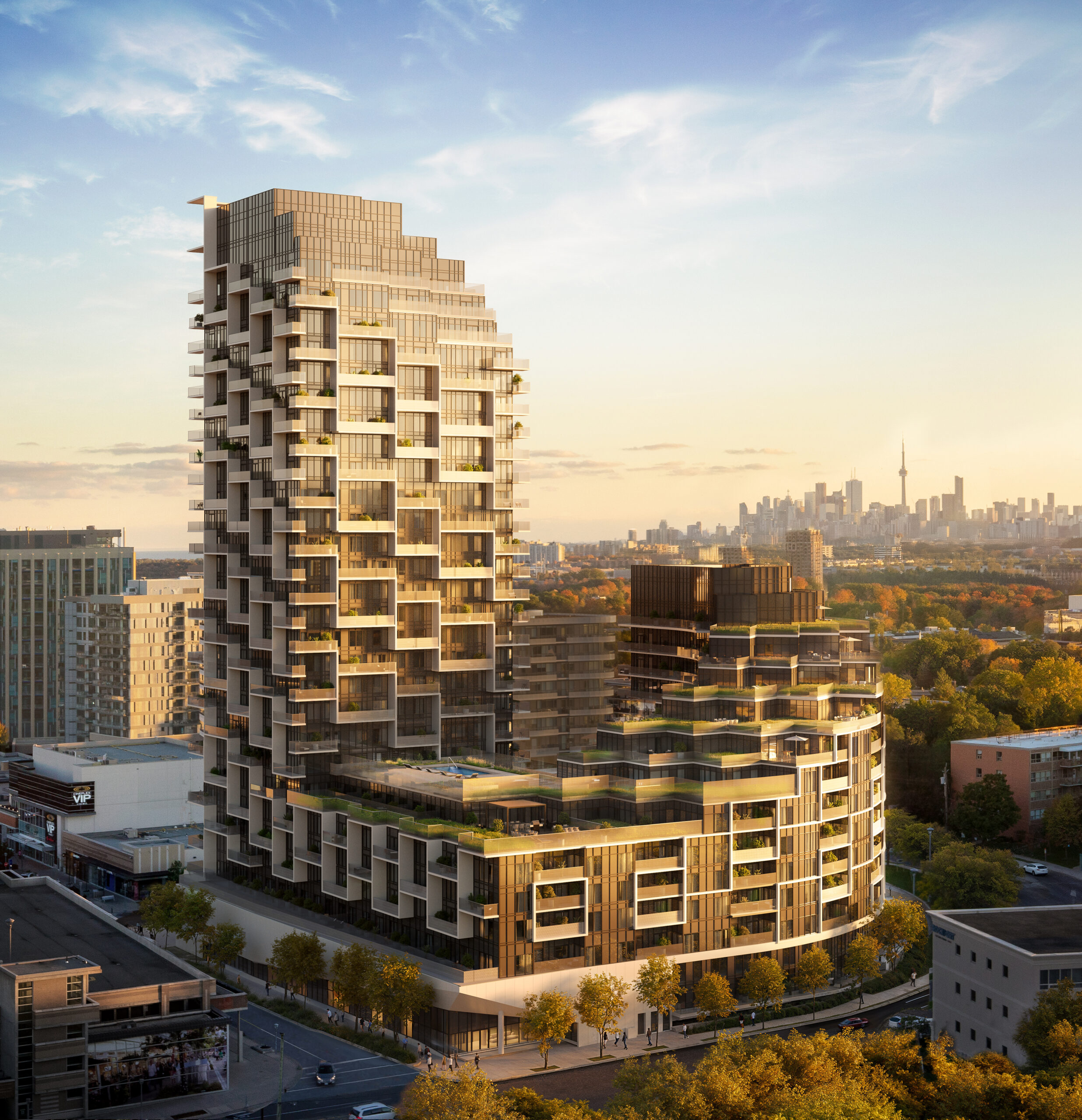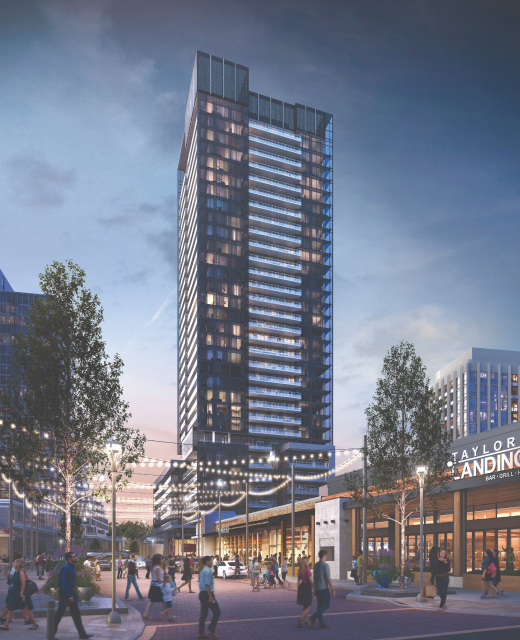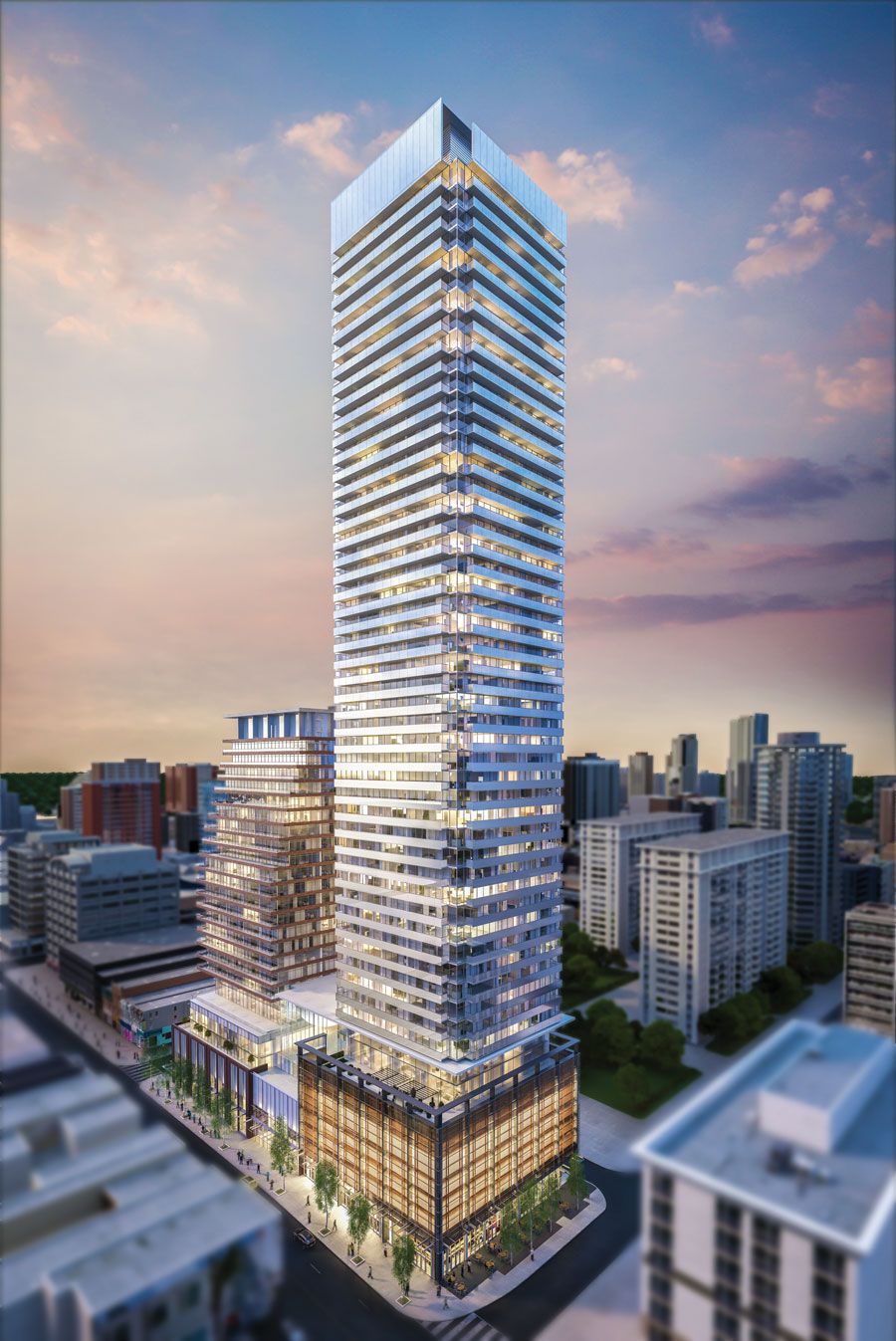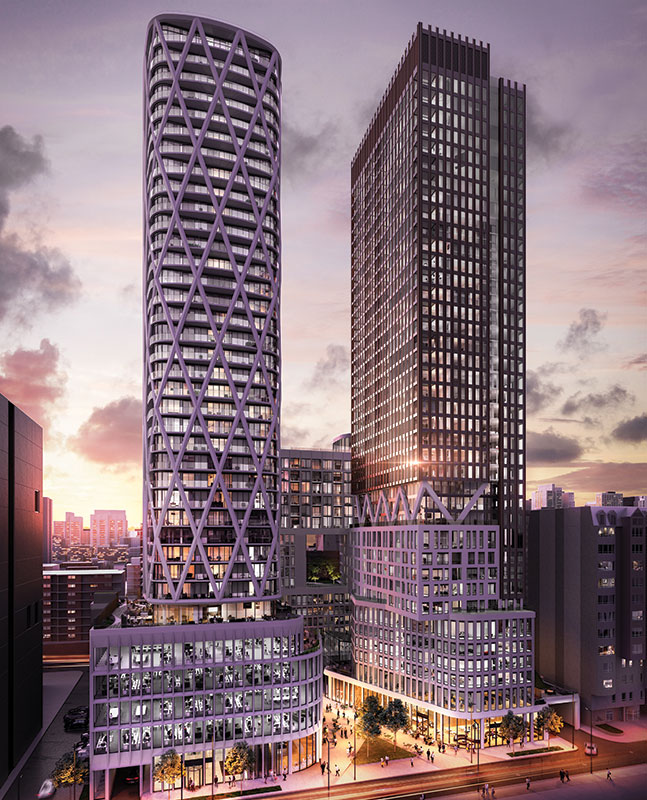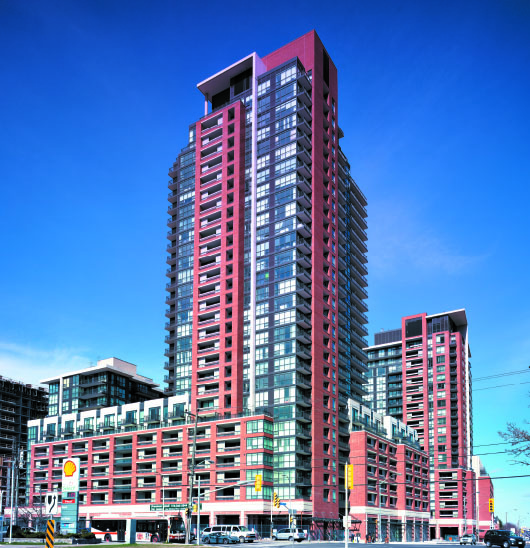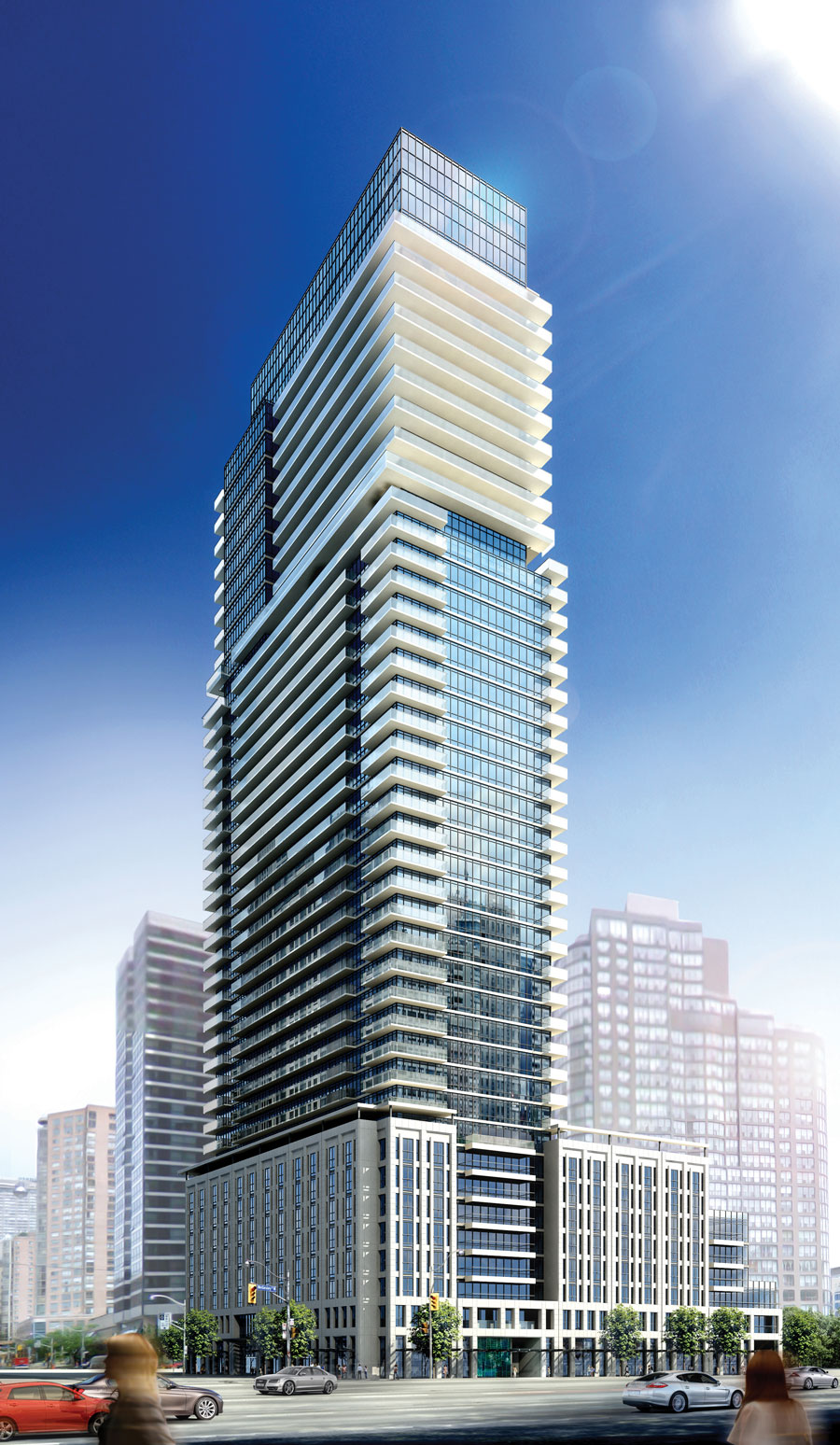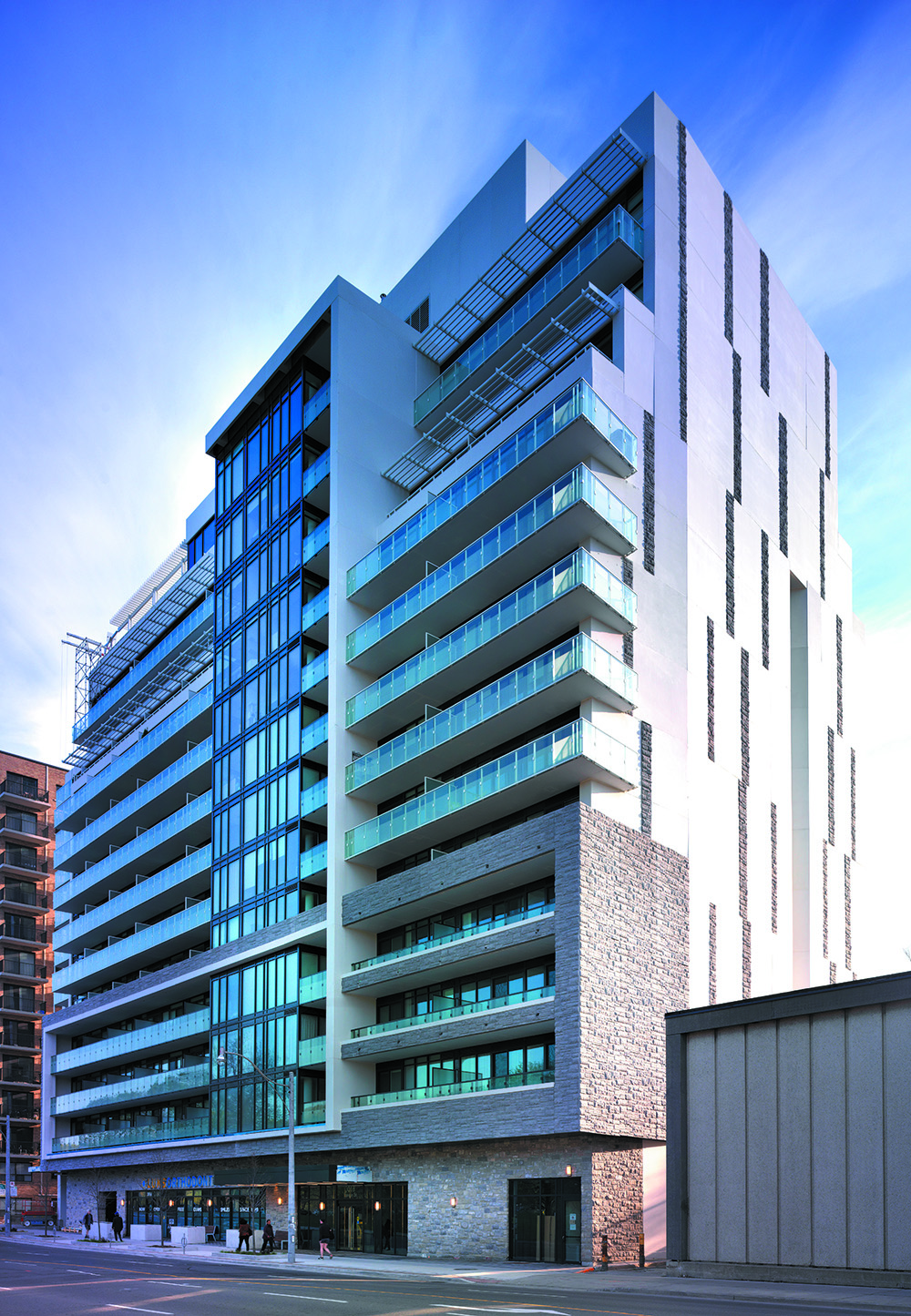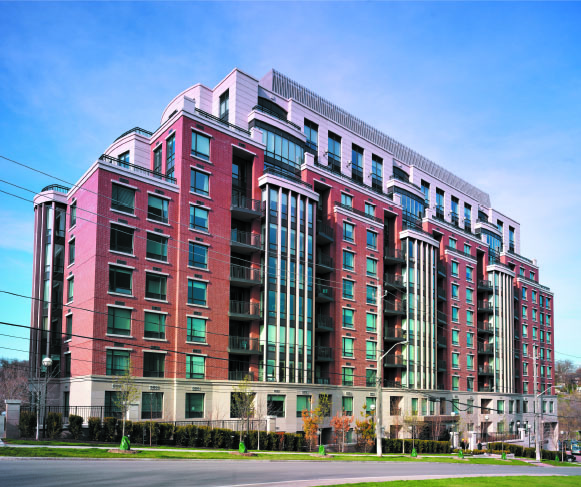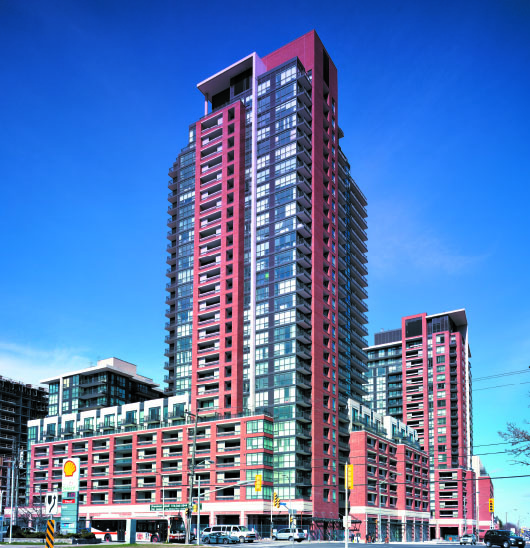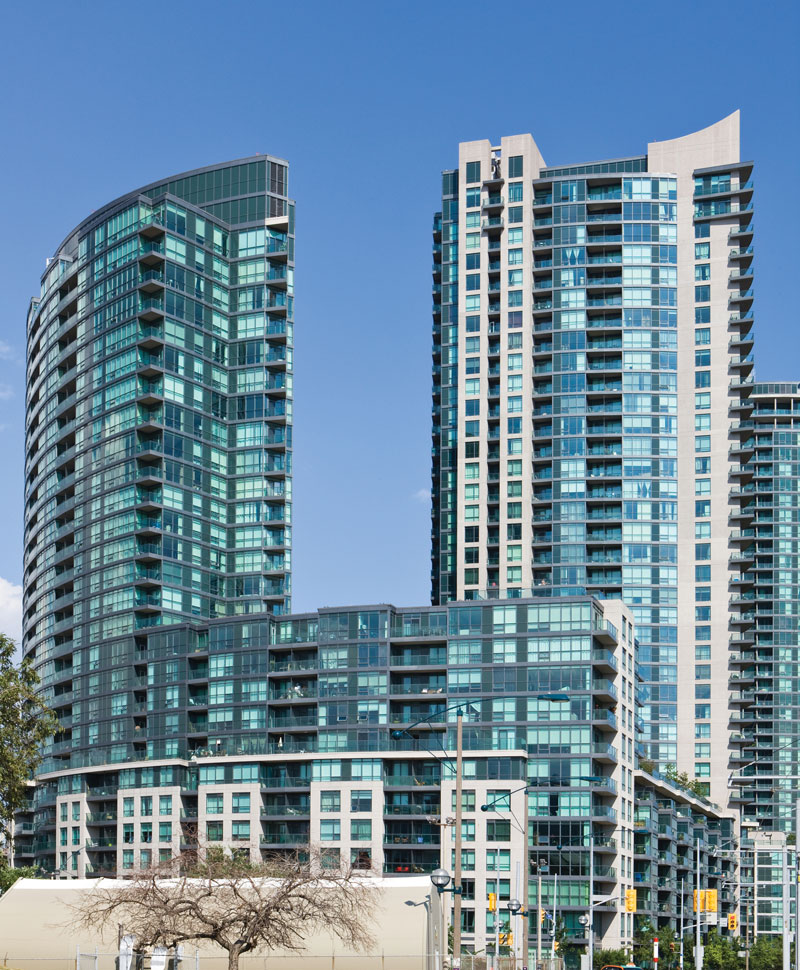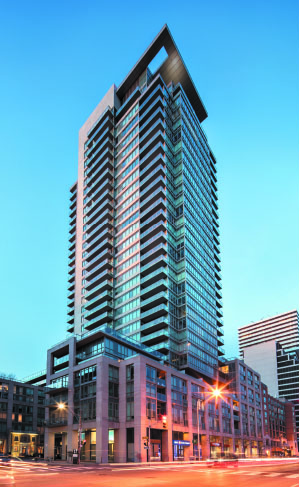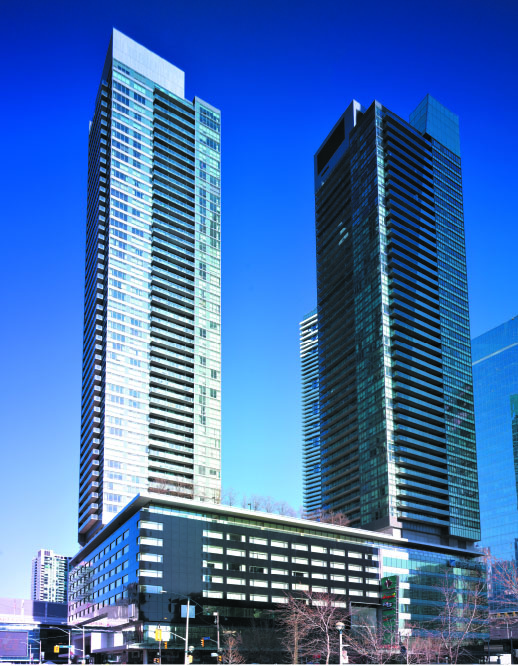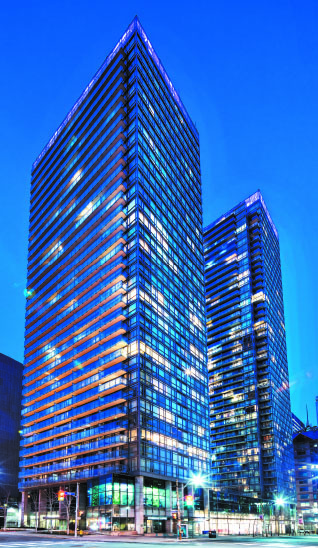TORONTO (Reuters) – Barry Fenton walked to the bank of floor-to-ceiling windows in his 30th-floor uptown Toronto penthouse suite and declared, “This is the best view of the city.”
To the south, a mass of steel-and-glass skyscrapers glinted in the bright autumn sun. Several cranes were in motion on unfinished buildings, a common sight in a city in the midst of a residential building boom.
“If you look around the core, every building you look at has a different look to it, a different ambience,” said the energetic co-founder of Lanterra Developments, one of the city’s most active builders. “That’s important.”
Fenton, 56, says he is confident the city’s condominium market will remain strong — despite warnings that it is all moving too far, too fast — and has an ambitious lineup for future development. And he is not alone in his optimism.
Toronto’s seams are bursting with new condo and hotel towers designed by star architects like Frank Gehry and built by famed developers like Donald Trump.
But Fenton and others who see Toronto emerging from its “pokey” past — as a columnist in the Globe and Mail recently described it — face some formidable obstacles: an infrastructure buckling under soaring density rates, the laws of supply and demand and preservationists who says too many new towers are destroying the city’s character.
Canada’s central bank drew a bead on the city of 2.6 million this month in its weighty “Financial System Review,” warning of “potential future supply imbalances” in the condo market.
The Bank of Canada noted that the number of unsold condominiums in pre-construction has doubled, to 14,000, over the past year.
Greater Toronto home sales have slowed after years of steady increases. Sales fell 16 percent in November from the same month a year ago, according to the Toronto Real East Board. So far, however, prices are flattening, not falling, as some analysts have predicted.
In defiance of warnings by the central bank and economists, two mega-projects were unveiled within days of each other in October — a three-tower condo complex to be designed by Gehry and a multi-tower office project that includes a massive casino.
RACE TO THE TOP
More skyscrapers — 147 of them — are being built in Toronto than anywhere in North America, according to Emporis, the German data provider. That is twice as many as in New York, a city with about three times the population.
Toronto is getting taller fast. Fifteen buildings that will be more than 150 meters (492 feet) high are under construction, more than anywhere in the western hemisphere.
The recently completed Trump International Hotel topped out at 277 meters, just shy of Toronto’s tallest skyscraper, the 72-story First Canadian Place, which is 298 meters. That height could be exceeded by a couple of major projects on the drawing boards, including the Mirvish project.
(The city’s tallest freestanding structure, however, is the CN Tower, which soars over Toronto at 553 meters.)
“Toronto is creating a very sustainable future by building condos downtown,” said Daniel Libeskind, the American architect, who was in Toronto in October for a ceremony for one of his latest projects, the 57-story L Tower, with its sweeping, curvaceous, design that rises above the city’s modernist Sony Center for Performing Arts.
“It fights urban sprawl and brings people into the heart of the city.”
While building in big American cities and in Western Europe cratered following the financial crisis four years ago, Toronto never stopped booming. Demand for residential space has been strong, and while the office market has also been healthy, most of the new developments have been for condo projects.
Lanterra’s Fenton said his company has built some 9,000 condominium units in Toronto over the past 10 years and now has “in the hopper” up to 6 million square feet of property in downtown Toronto that is being rezoned for new projects.
Lanterra gained prominence over the past five years for the development of Maple Leaf Square, which included two condo towers, a hotel and office space, near the city’s hockey shrine, Air Canada Center, on land that had sat vacant for years.
Now it is “one of the hottest places to be,” said Fenton.
“ONE TOWER LEADS TO ANOTHER”
Some worry that Toronto can’t handle much more development.
“We have accumulated a serious infrastructure deficit,” wrote Ken Greenberg, a Toronto architect, in the Globe and Mail in October. “We have failed to make the investments in public transit that are urgently needed. Our narrow sidewalks and poorly designed streets are already jammed.”
He criticized the city officials and developers for a lack of coordinated planning. “One tower leads to another,” he said.
Despite decades of debate about transportation policy, Toronto has just two subway lines, a fleet of charming but lumbering streetcar lines and crumbling roadways.
Commuters in Toronto spend at least 80 minutes in traffic a day, on average — worse than what commuters face in London or Los Angeles — according to the Toronto Board of Trade.
Toronto’s City Planning Department did not respond to numerous requests for comment.
There is also concern about soaring neighborhood density rates. The city’s waterfront area has seen the most growth. Its population has soared 134 percent in a decade and is up 66 percent in the past five years, to 43,295, according to city data.
Toronto’s aging energy grid is strained. In July, downtown Toronto endured an eight-hour blackout after a transformer blew due to high demand. There was a similar outage last January.
THE MEGA-PROJECTS
Now two of the most ambitious projects the city has ever seen are being floated.
First out of the gate was theater impresario David Mirvish, who with his father, the late Ed Mirvish, helped create Toronto’s vibrant arts and theater scene.
In early October, Mirvish unveiled a plan for three condominium towers, with up to 85 floors each, that would be the city’s tallest buildings.
A podium at the buildings’ base would house two museums, including one for the Mirvish family’s contemporary art collection.
The Mirvish buildings would be designed by Gehry, the celebrated Canadian-born architect whose 76-story 8 Spruce Street residential tower was just completed in New York.
“These towers can become a symbol of what Toronto can be,” the 83-year-old Gehry said at project’s unveiling. “I am not building condominiums, I am building three sculptures for people to live in.”
Two weeks later, Oxford Properties Group, a Canadian developer with a $20 billion global real estate portfolio, announced a $3 billion makeover of the downtown convention center, just south of the Mirvish and Gehry project. It envisions a casino, two hotel towers and two office towers that would be among the tallest in the city.
Adam Vaughan, a city councilor whose district would encompass both projects, said a lot more planning is needed. He had kinder words for the Mirvish proposal — “it’s a transformative and astonishing proposal” — than for Oxford’s project, which he called “all out of proportion.”
“It’s time to have a really smart conversation about how we are building this neighborhood because there is a hell of lot of density arriving not just with this project but with all the projects that have been approved,” he said in an interview.
AT THE KIT KAT
Al Carbone, owner for the past three decades of the Kit Kat restaurant, doesn’t think people like Vaughan are listening to him, as the councilor and other politicians are not heeding the growing concerns about the rapid pace of development.
He said buildings are springing up too close to lot lines, creating jammed sidewalks and alleyways. And the sun does not shine on the streets like it once did.
He supports the Mirvish project, which would preserve his street, known as Restaurant Row. But he is battling a separate 47-story building that would go up steps away from his restaurant.
The plan, which still must be approved, would retain the historic facades of buildings on the street, which Carbone believes will destroy the character of the row.
“It’s a tough battle,” said Carbone, who launched the website SaveRestaurantrow.com to drum up support in opposition to the project. “You can’t have a condo on every corner.”
WHERE IS TORONTO HEADED?
Some believe Toronto is at a crossroads as developers, politicians and citizens debate the rapid changes the city’s urban landscape.
The Globe and Mail’s Marcus Gee dismissed the idea that the development was somehow bad for the city in a column in October, saying the condo boom “has transformed our once-pokey downtown into a vibrant, around-the-clock urban community.”
David Lieberman, an architect who also teaches at the University of Toronto’s architectural school, agrees the new developments have been good for the city, but he is not sure the city’s citizens are ready for it.
“We have such an excellent opportunity to get things right, but there is the Canadian conservatism,” Lieberman said, sipping coffee in his studio in an old downtown Toronto house. “Canadians in their city building are not risk takers.”
Reporting By Russ Blinch. Editing by Janet Guttsman and Douglas Royalty
